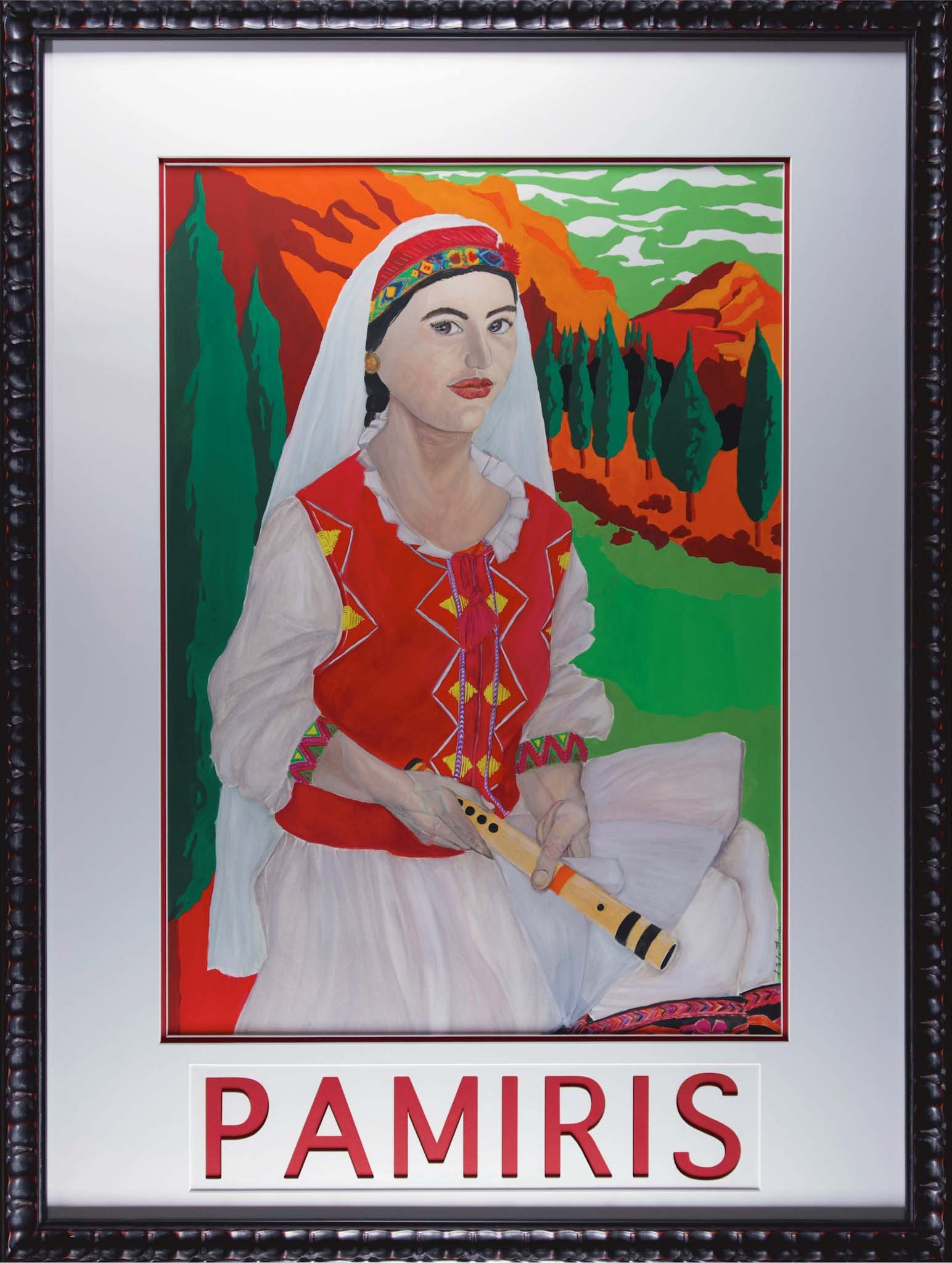Pamiris
GOUACHE, AND WATER SOLUBLE OIL STICKS
31” W x 41.13” H x 1.25” D
$3800.00
Pamiris
At Risk of Becoming Stateless
The Pamiris, an indigenous people, have endured a turbulent history as their ancestral lands were divided between Tajikistan and Afghanistan during the Soviet era. They established a measure of autonomy within the Badakhshan Mountainous Autonomous Region. Despite their autonomous status within Tajikistan, the Pamiris face numerous challenges, including a lack of infrastructure and widespread persecution. Religious restrictions and social marginalization have severely impacted their identity, particularly in preserving and using their Pamiri language.
Decades of discrimination, coupled with instances of ethnic cleansing, have left many Pamiris destitute and deprived of essential resources due to blockades and resource cutoffs, including internet shutdowns. Those brave enough to voice their dissent through protests have paid a heavy price, with loss of life and freedom. Forced displacement has driven many Pamiris to become labor migrants or seek asylum elsewhere.
Ironically, since 2014, Tajikistan has been working towards ending Statelessness for approximately 20,000 former Soviet Union citizens residing within their borders. However, the Pamiris, who possess citizenship, find themselves unrecognized as distinct people and are often erroneously referred to as the Tajiks. This disappointing situation has resulted in ongoing human rights violations, with the Tajikistan government regularly subjecting the Pamiri minority to arbitrary detentions and harassment.
In this painting depicting the Pamiri people, the backdrop features the distinctive hues of the Pamiri flag- burnt red, green, and white- representing the Badakhshan Mountainous Autonomous Region. A Pamiri woman takes center stage by holding a ney, a traditional Pamiri flute. She adorns herself in a beautifully embroidered Pamiri vest, complimented by a white shirt, skirt, and trousers, showcasing the richness and beauty of the Pamiri culture.
